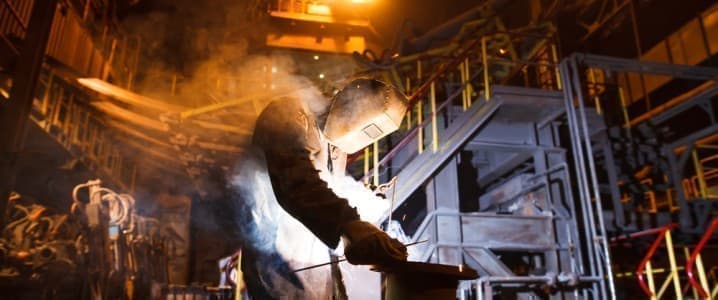The world has come a long way in its decarbonisation efforts across a range of industries in recent years. however, it remains extremely difficult to cut carbon in some hard-to-abate industries. Governments are finding it particularly difficult to reduce the greenhouse gas emissions associated with shipping, aviation, and heavy industry, despite new clean technologies and, in many cases, financial incentives to decarbonise. Although many companies are introducing carbon capture and storage (CCS) technologies and other carbon offset schemes, there is increasing scepticism about the efficacy of this approach. But one thing is certain, decarbonising hard-to-abate sectors will require a massive investment.
Hard-to-abate sectors such as cement, chemicals, fertilisers, steel, aviation, shipping and road freight together account for roughly one-third of global CO2 emissions. Despite innovations in green energy and clean technologies, there is still no widely available alternative to jet fuel or ship diesel, making it very difficult to reduce emissions in the shipping and aviation sectors. This also means that the two sectors continue to rely heavily on fossil fuel production to sustain operations. Several heavy industries, such as cement and plastic production, also depend on fossil fuels to power operations.
Hannah Pitt, the associate director at Rhodium, a company that has made emissions projections based on anticipated policies until 2050, stated, “We’ve made a lot of progress in the last few years – wind and solar are really poster children of success and electric vehicles are at a turning point now.” She added, “That makes up a good chunk of emissions but there is much less progress in other sectors. With aviation and shipping, there’s just not as much innovation and no clear cost-effective alternatives to fossil fuels. And then we have industrial processes that make up a huge fraction of emissions and each require their own tools and innovations to bring that down, and emissions are staying stubbornly high.”
The projections show that while emissions associated with electricity production and cars could fall by 35 percent and 53 percent respectively by 2050, shipping and industry may only see a decrease in emissions of 1 percent each, while aviation-associated emissions could rise by as much as 77%, based on increased demand. Changing the outlook will require a wide range of interventions and high levels of funding.
One increasingly common approach to decarbonising hard-to-abate sectors is the incorporation of CCS technologies into operations. This is particularly common in fossil fuel production and heavy industry. CCS works by capturing the carbon dioxide that is released during operations and transporting it to be stored safely, rather than released into the atmosphere. The carbon can either be stored long-term or reused for other purposes, such as in hydrogen production. However, many energy experts believe that CCS is a fallacy, used by companies to delay the curbing of fossil fuel use and emissions generation.
According to recent reports, there is still no technology that has proven capable of sequestering carbon from industrial processes or removing it from the atmosphere directly in the quantities necessary to offset the carbon emissions fossil fuel companies and nations plan to add to the atmosphere over the next 25 years.Collin Rees, the U.S. Programme Manager at Oil Change International, explained, the “idea that we can build more fossil fuels but it’s okay because we can mitigate the emissions, or we’ll be able to pull carbon out of the air, or out of the smokestacks, I think is incredibly dangerous.”
While improvements are being made in CCS technology, blind reliance on the CCS industry being able to scale the technology at the rate needed to reduce emissions could lead to massive failures in decarbonisation if the anticipated developments are not realised. Many scientists and climate change experts believe the only assured means of reducing greenhouse gas emissions is by phasing out fossil fuels, and any alternative will not be sufficient for achieving global climate aims.
One thing’s for sure, massive funding is needed to ensure meaningful change in hard-to-abate sectors. This includes investment in research and development into clean technologies and green fuels. According to the United Nations Framework Convention on Climate Change (UNFCCC), climate investments of $1.6 to $3.8 trillion per year are required from 2020 to 2050 to meet the objectives outlined in the Paris Agreement, and investments in hard-to-abate sectors have not been seen at the same pace as other green finance.
Unfortunately, innovation is generally seen as risky and, therefore, is not usually welcomed in hard-to-abate industries. In addition to greater funding, a cultural shift must also take place to prepare these industries for the coming decades. Benedikt Sobotka, the CEO of Eurasian Resources Group, a mining company, explained, “Nobody has ever been fired for using the same processes they did 20 or 30 years ago… We need to get a lot more risk-taking and innovation into this industry… We have to change attitudes towards innovation.” However, others in the industry believe that in recent years there has been more openness to innovation, with some companies actively pursuing even early-stage technologies.
By Felicity Bradstock for Oilprice.com
More Top Reads From Oilprice.com:
- Rystad: Energy Transition Requires $3.1 Trillion in Grid Investment by 2030
- Can Hydrogen Cars Compete With EVs?
- Iron Ore Prices Rise as China Ramps Up Imports


















